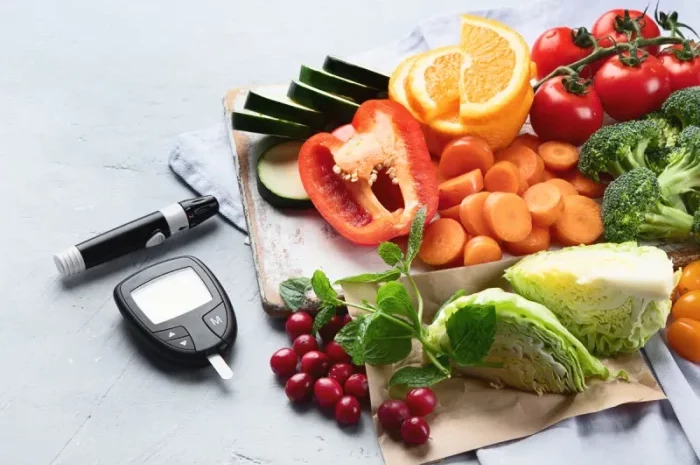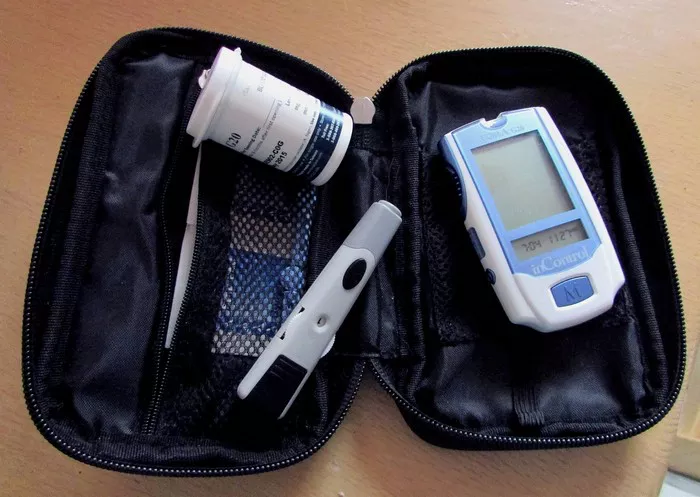Introduction
Diabetes is a chronic condition that affects millions of people worldwide, characterized by elevated blood glucose levels due to the body’s inability to produce or effectively use insulin. Managing diabetes involves a multifaceted approach that includes medication, physical activity, and most importantly, diet. A well-structured diabetes diet is essential for maintaining blood glucose levels within the target range, preventing complications, and improving overall health. This article aims to provide an in-depth understanding of what constitutes a diabetes-friendly diet and offers practical advice for individuals looking to manage their diabetes through nutrition.
Understanding Diabetes and the Role of Diet
Diabetes can be broadly classified into three types: Type 1, Type 2, and gestational diabetes. Each type has unique characteristics, but the cornerstone of managing all forms of diabetes is maintaining optimal blood glucose levels.
Type 1 Diabetes
Type 1 diabetes is an autoimmune condition where the body’s immune system attacks the insulin-producing beta cells in the pancreas. People with Type 1 diabetes require lifelong insulin therapy and need to carefully balance insulin doses with carbohydrate intake and physical activity.
Type 2 Diabetes
Type 2 diabetes is primarily associated with insulin resistance, where the body’s cells do not respond effectively to insulin. This type of diabetes is often linked to lifestyle factors such as obesity, physical inactivity, and poor diet. Type 2 diabetes can often be managed with lifestyle modifications, oral medications, and in some cases, insulin.
Gestational Diabetes
Gestational diabetes occurs during pregnancy and usually resolves after childbirth. However, it increases the risk of developing Type 2 diabetes later in life for both the mother and child. Dietary management is crucial for maintaining healthy blood glucose levels during pregnancy.
Diet plays a pivotal role in managing all types of diabetes. The primary goals of a diabetes diet are to keep blood glucose levels within the target range, manage weight, and reduce the risk of cardiovascular disease.
Key Principles of a Diabetes Diet
A diabetes diet is not a rigid meal plan but rather a guide to making healthier food choices. The following principles form the foundation of an effective diabetes diet:
1. Carbohydrate Management
Carbohydrates have the most significant impact on blood glucose levels. Understanding the types of carbohydrates and their effects on blood sugar is crucial for diabetes management.
Simple vs. Complex Carbohydrates
- Simple Carbohydrates: Found in foods such as candies, syrups, and sweetened beverages, simple carbohydrates are quickly absorbed by the body, leading to rapid spikes in blood glucose levels. These should be limited in a diabetes diet.
- Complex Carbohydrates: Found in whole grains, legumes, vegetables, and fruits, complex carbohydrates are digested more slowly, leading to a gradual rise in blood glucose levels. These should be the primary source of carbohydrates in a diabetes diet.
Glycemic Index (GI) and Glycemic Load (GL)
- Glycemic Index: The GI measures how quickly a carbohydrate-containing food raises blood glucose levels. Foods with a low GI (55 or less) are preferable as they cause slower, more stable increases in blood sugar.
- Glycemic Load: GL takes into account the quantity of carbohydrates in a serving and the GI, providing a more accurate picture of a food’s impact on blood glucose levels.
2. Balancing Macronutrients
A balanced intake of macronutrients – carbohydrates, proteins, and fats – is essential for stable blood glucose levels and overall health.
Proteins
Proteins have a minimal impact on blood glucose levels and are crucial for muscle repair and growth. Lean sources of protein, such as poultry, fish, beans, and tofu, should be included in every meal.
Fats
Healthy fats, such as those found in avocados, nuts, seeds, and olive oil, are important for heart health and can help improve insulin sensitivity. Trans fats and saturated fats should be limited, as they can increase the risk of cardiovascular disease.
3. Portion Control and Meal Timing
- Portion Control: Eating appropriate portion sizes helps manage calorie intake and prevents overeating. Using smaller plates, measuring portions, and being mindful of hunger and fullness cues can aid in portion control.
- Meal Timing: Consistent meal timing helps regulate blood glucose levels. Eating smaller, balanced meals at regular intervals throughout the day can prevent large fluctuations in blood sugar.
4. Incorporating Fiber
Dietary fiber, found in fruits, vegetables, whole grains, and legumes, slows carbohydrate digestion and absorption, leading to more gradual increases in blood glucose levels. Aiming for at least 25-30 grams of fiber per day is beneficial for diabetes management.
5. Staying Hydrated
Water is essential for overall health and helps in maintaining optimal blood glucose levels. Sugary beverages should be avoided, and water, herbal teas, or other non-caloric drinks should be preferred.
Building a Diabetes-Friendly Plate
Creating a balanced meal that adheres to the principles of a diabetes diet can be simplified using the “Diabetes Plate Method.” This method involves dividing your plate into sections to ensure a balanced intake of macronutrients.
The Diabetes Plate Method
- Half of the Plate: Non-starchy vegetables (e.g., leafy greens, broccoli, cauliflower, peppers).
- One-Quarter of the Plate: Lean proteins (e.g., chicken, fish, tofu, legumes).
- One-Quarter of the Plate: Complex carbohydrates (e.g., whole grains, starchy vegetables).
Adding a serving of fruit and a source of healthy fat (e.g., nuts, seeds, avocado) completes the meal. This method helps in visualizing portion sizes and ensuring a balanced intake of nutrients.
Meal Planning and Preparation Tips
Effective meal planning and preparation are crucial for adhering to a diabetes diet. Here are some tips to help you get started:
1. Plan Ahead
- Weekly Meal Plan: Create a weekly meal plan that includes breakfast, lunch, dinner, and snacks. This helps in making healthier choices and reduces the temptation to eat unhealthy foods.
- Grocery List: Based on your meal plan, make a grocery list to ensure you have all the necessary ingredients. This helps in avoiding impulse purchases of unhealthy foods.
2. Cook at Home
- Home-Cooked Meals: Preparing meals at home gives you control over the ingredients and portion sizes. Experiment with healthy recipes and cooking methods such as grilling, baking, steaming, and sautéing.
- Batch Cooking: Cook larger quantities of meals and store portions in the refrigerator or freezer for quick and convenient meals during the week.
3. Mindful Eating
- Eat Slowly: Take time to eat and savor your meals. Eating slowly helps in recognizing hunger and fullness cues, preventing overeating.
- Avoid Distractions: Focus on your meal without distractions such as TV or smartphones. This promotes mindful eating and better digestion.
4. Healthy Snacks
- Smart Snacking: Choose snacks that are balanced and contain fiber, protein, and healthy fats. Examples include a piece of fruit with nut butter, yogurt with berries, or a handful of nuts.
Special Considerations for Different Types of Diabetes
Type 1 Diabetes
For individuals with Type 1 diabetes, carbohydrate counting is essential. This involves tracking the number of carbohydrates in each meal and snack to match insulin doses accordingly. Regular blood glucose monitoring is crucial to adjust insulin and prevent hypoglycemia.
Type 2 Diabetes
Weight management is often a primary focus for individuals with Type 2 diabetes. A balanced diet that promotes weight loss and improves insulin sensitivity is beneficial. Incorporating regular physical activity can further enhance glucose control.
Gestational Diabetes
Pregnant women with gestational diabetes need to ensure adequate nutrition for both mother and baby while maintaining blood glucose levels. Frequent, balanced meals with a focus on low-GI foods and regular blood glucose monitoring are recommended.
Common Myths and Misconceptions about Diabetes Diet
1. “You Must Avoid All Carbohydrates”
Carbohydrates are an essential part of a balanced diet and provide energy. The focus should be on choosing the right types of carbohydrates and managing portion sizes rather than eliminating them completely.
2. “Diabetic Foods Are Necessary”
Special “diabetic” foods often offer no significant benefit and can be expensive. A balanced diet with whole, minimally processed foods is more effective for managing diabetes.
3. “You Can’t Eat Sweets or Desserts”
Moderation is key. Sweets and desserts can be enjoyed occasionally as part of a balanced diet. Choosing healthier alternatives and mindful portion sizes can help satisfy cravings without compromising blood glucose control.
4. “Fruit Is Bad for Diabetes”
Fruits contain natural sugars but also provide essential vitamins, minerals, and fiber. Choosing whole fruits over fruit juices and managing portion sizes can allow for fruit to be a healthy part of a diabetes diet.
Diabetes Diet and Lifestyle
1. Physical Activity
Regular physical activity enhances insulin sensitivity and helps manage blood glucose levels. Aim for at least 150 minutes of moderate-intensity aerobic activity per week, along with strength training exercises.
2. Stress Management
Stress can impact blood glucose levels. Incorporating stress-reducing activities such as yoga, meditation, or hobbies can improve overall well-being and diabetes management.
3. Adequate Sleep
Poor sleep can affect insulin sensitivity and blood glucose control. Aim for 7-9 hours of quality sleep each night.
Conclusion
A diabetes diet is not a one-size-fits-all approach but a personalized plan that takes into account individual preferences, lifestyle, and medical needs. By understanding the principles of carbohydrate management, balancing macronutrients, and making healthier food choices, individuals with diabetes can achieve better blood glucose control
Related topics:
























